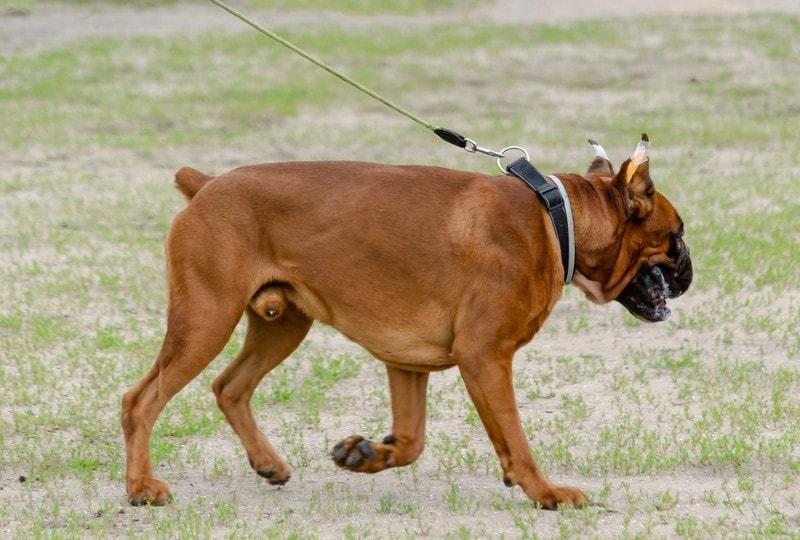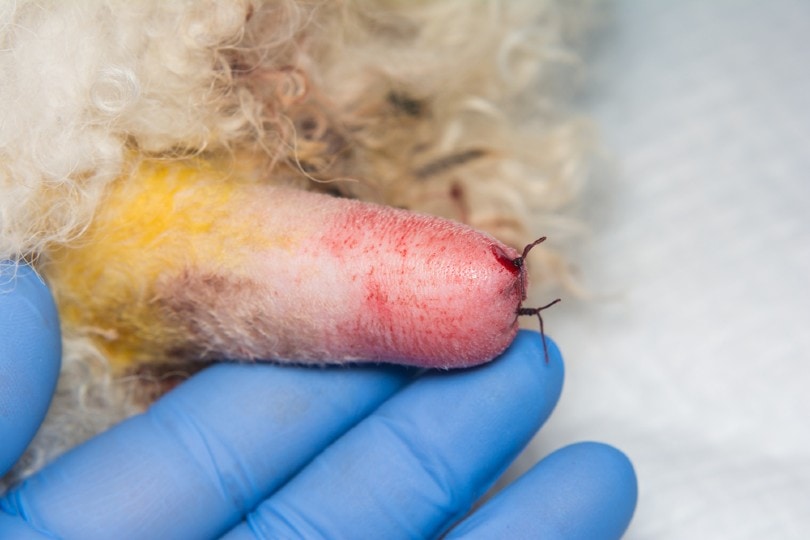
Tail docking in dogs, also known as canine caudectomy, started over 2,000 years ago and was first created to protect hunting dogs, as it was thought that their tails made them easier to catch by predators. In England, this soon became a regular surgery starting in 1786. When working dogs had their tails docked, the owners received a tax break.
However, even after the tax cuts stopped being given, the procedure didn’t. It soon became breed-specific, meaning certain dog breeds were expected to undergo tail docking. In today’s modern world, there are still a few pro-docking groups, but most animal lovers know this is inhumane and should never be done to a dog. Tail docking has been banned in Europe since 1998, as well as in Australia. The only holdouts to prohibit the practice are the United States and some parts of Canada.
How Does It Work?
The tail docking procedure is done when a dog is still just a tiny puppy. Part of the dog’s tail is removed, usually by the breeder or a vet. Surgical scissors are used, and no anesthesia is given. The thought process behind this is that the puppy is too young for the pain to bother him when his tail is cut off.
This is a very painful procedure for a puppy, even though it’s done when its tail is still soft. This is also called tail bobbing. There are very few vets that approve of this procedure, yet it still goes on and is legal in the United States. Though the United States doesn’t control the practice, they don’t regulate it either.

What Dog Breeds Undergo Tail Docking?
A few breeds have naturally docked tails, but some are docked to conform to breed standards. According to the American Kennel Club (AKC), this is important so that certain breeds can define and preserve their breed character. Others, such as the American Veterinary Medical Association (AVMA,) vehemently disagree with the practice and feel it should be banned.
If you have a dog in these categories, this isn’t a recommended procedure any longer. In fact, we will probably start seeing fewer and fewer of these dogs with docked tails as more countries decide to ban the practice. So think twice and consult your vet before having a tail docking procedure done on your canine friend.
Where Is It Used?
Many breeders and pet owners use tail docking for the reasons stated above. Some pet owners will have their working dogs‘ tails docked to prevent tail injuries. Sometimes, there are also medical reasons for having a dog’s tail docked. If you’re considering having your dog’s tail docked, you must talk to your vet first to see if it’s even necessary. If it isn’t, it’s best not to put your dog through that kind of pain.

Benefits of Tail Docking
A couple of benefits have been put forth in favor of having some dog’s tails docked.
Dangers of Tail Docking
While there are a few advantages to having some dog’s tails docked, there are more dangers to having this procedure.
These dangers may not seem that bad to some pet owners, but they can be extremely painful and cause problems for your pet.

Frequently Asked Questions (FAQs)
While tail docking is legal in the United States and parts of Canada, it is still a practice that is frowned upon by most pet owners and vets. We’ll answer a few of the most common questions about tail docking in the FAQ section below.
Does Pet Insurance Cover Tail Docking?
No, pet insurance does not cover tail docking as it’s considered to be an elective surgery and is also considered to be inhumane. However, if your vet feels that tail amputation is needed, which is an entirely different procedure, some pet insurance providers will cover it. It’s best to talk to your vet and insurance company to see if this is needed for your dog and if the insurance company will cover the surgery. The vet will make the decision and let you know if it’s necessary or not.
Do Other Animals Have Tail Docking Procedures?
Docking is performed regularly on farm animals, such as sheep, pigs, and sometimes cows. Some companion dogs also undergo the procedure, but it is not recommended.
What Can You Do to Help?
Now that you know how bad tail docking is and how painful and dangerous it is for the dog, you might be wondering what you can do to help. The biggest thing you can do is adopt a dog from the shelter since these dogs don’t have their tails docked like they do with many breeders. You can also send emails to state and federal leaders to ban the practice.
Summary
During a tail docking procedure, a puppy’s tail is surgically removed with surgical scissors. This is done without any pain medicine and is a practice that has been banned in many countries. It is not only painful to the puppy but also dangerous and can cause socialization and aggression issues in the dog as it ages.
Please do your part to stop tail docking by refusing to have the procedure done on your pet and speaking out against it when you can. Together we can make a difference in the lives of the breeds forced through this procedure for show reasons and breed standards.
Featured Image Credit: Eudyptula, Shutterstock







